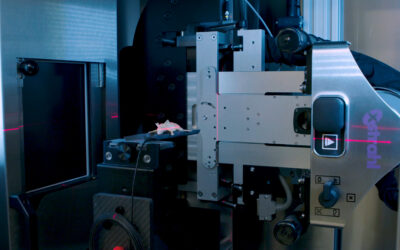Combined radiotherapy and hyperthermia offer great potential for the successful treatment of radio-resistant tumours through thermo-radiosensitization. Tumour response heterogeneity, due to intrinsic, or micro-environmentally induced factors, may greatly influence treatment outcome, but is difficult to account for using traditional treatment planning approaches.
Systems oncology simulation, using mathematical models designed to predict tumour growth and treatment response, provides a powerful tool for analysis and optimization of combined treatments. In their paper “Combining radiation with hyperthermia: a multiscale model informed by in vitro experiments” S. Brüningk, G. Powathil, P. Ziegenhein, J. Ijaz, I. Rivens, S. Nill, M. Chaplain, U. Oelfke, G. ter Haar, present a framework that simulates such combination treatments on a cellular level.
The multiscale hybrid cellular automaton simulates large cell populations (up to 107 cells) in vitro, using an Xstrahl SARRP, while allowing individual cell-cycle progression, and treatment response by modelling radiation-induced mitotic cell death, and immediate cell kill in response to heating.
Based on a calibration using a number of experimental growth, cell cycle and survival datasets for HCT116 cells, model predictions agreed well (R2 > 0.95) with experimental data within the range of (thermal and radiation) doses tested (0–40 CEM43, 0–5 Gy).
The proposed framework offers flexibility for modelling multimodality treatment combinations in different scenarios. It may therefore provide an important step towards the modelling of personalized therapies using a virtual patient tumour.
This Xstrahl In Action was adapted from a article found on a National Library of Medicine website.







